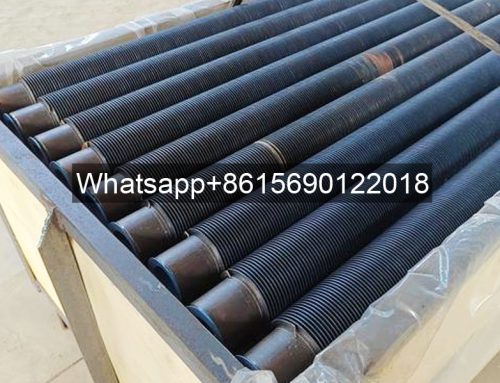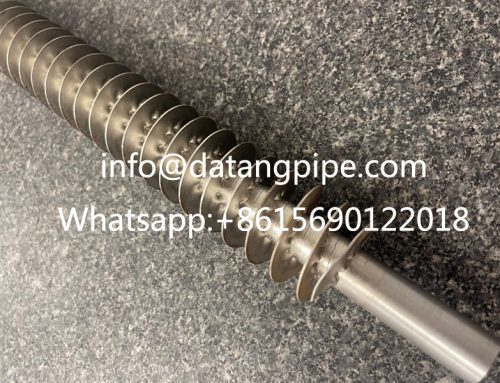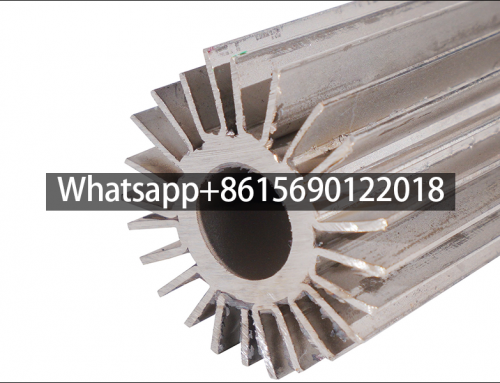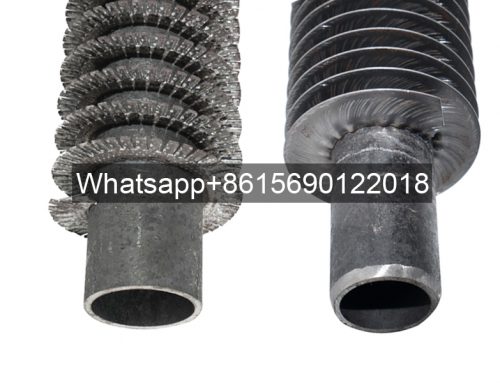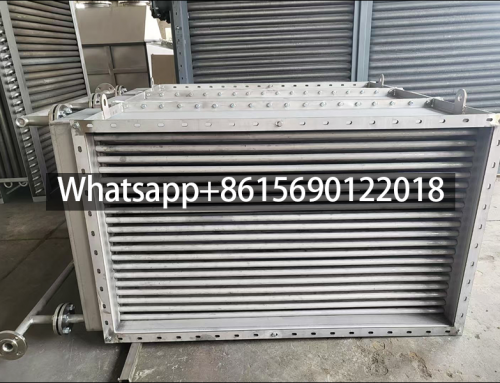Application of Steel Fin Tubes in Waste Heat Recovery Systems
Steel Fin Tubes: An Ideal Solution for Industrial Waste Heat Recovery
Steel fin tubes have become a preferred choice for waste heat recovery systems due to their high heat transfer efficiency, durability in harsh environments, and cost-effectiveness. These tubes can enhance heat recovery efficiency by 3-10 times compared to plain tubes while maintaining stable performance in high-temperature and corrosive conditions.
1. Enhanced Heat Transfer for Superior Recovery Efficiency
The most significant advantage of steel finned tubes lies in their exceptional heat transfer capability. By attaching numerous fins to the base tube’s exterior, the heat exchange surface area increases dramatically:
ParameterSteel Finned TubePlain TubeImprovementHeat transfer area3-10x largerBaseline200-900%Heat transfer coefficient3-5x higherBaseline200-400%Energy savings20-30% reductionBaseline-
In chemical plants, these tubes efficiently transfer heat from high-temperature gas waste to cooling water, rapidly generating hot water or steam for reuse.
2. Robust Construction for Long-Term Reliability
Steel finned tubes demonstrate excellent mechanical strength and corrosion resistance, making them suitable for demanding industrial environments:
PropertyPerformanceApplication ExampleTemperature resistanceStable at 500-800°CSteel mill flue gas recoveryPressure resistanceWithstands high-pressure flowPower plant steam systemsCorrosion resistanceResists acidic/alkaline mediaChemical processing plants
The high-frequency welding process creates strong bonds (80-120MPa) between fins and base tubes, ensuring structural integrity even under thermal stress.
3. Economic Advantages Through System Optimization
The economic benefits of steel finned tubes stem from both direct and indirect cost savings:
Cost FactorAdvantageImpactEnergy recovery3-7x more efficientFaster ROI (2-3 years typical)Space requirementsCompact design30-50% space savingsMaintenanceLong service lifeReduced downtime and replacements
These tubes have become indispensable in industries ranging from petrochemicals to metallurgy, where they contribute significantly to energy conservation and emission reduction targets.
Application of steel fin tubes in waste heat recovery systems
Steel finned tubes improve waste heat recovery efficiency by 3-10 times through efficient heat exchange design. They are stable and durable in high temperature and corrosive environments, while reducing energy and maintenance costs. They are ideal for industrial waste heat recovery.
1. Efficient heat exchange to improve waste heat recovery efficiency
The most significant advantage of steel finned tubes is their efficient heat exchange capacity. Its unique structural design is to set a large number of fins outside the base tube, which greatly increases the heat dissipation area. Compared with ordinary light tubes, the heat exchange area can be increased by 3 to 10 times or even more.
When high-temperature fluids, such as high-temperature flue gas in industrial production and steam discharged from thermal power plants flow in the tube, and low-temperature fluids, such as air used for cooling and industrial water, contact the fins outside the tube, the larger contact area enables heat to be quickly transferred from the hot fluid to the cold fluid.
Taking chemical enterprises as an example, in the waste heat recovery of reactors, steel finned tubes can quickly transfer the waste heat of high-temperature gas to cold water, efficiently produce hot water or steam, and greatly improve the waste heat recovery rate and quality.
2. Stable and durable to ensure long-term operation of the system
The operating environment of the waste heat recovery system is complex, and the stability and durability of the equipment are very critical. Steel finned tubes are generally made of high-quality steel. The base tube and the fin are closely connected through advanced welding technology, with excellent mechanical strength and corrosion resistance.
In harsh working conditions of high temperature and high pressure, or in an environment with corrosive media, they can operate stably, with very few problems such as damage and deformation, which effectively guarantees the long-term stable operation of the waste heat recovery system.
For example, in the waste heat recovery device of the high-temperature flue of a steel plant, the temperature in the flue is 500℃-800℃ all year round, accompanied by dust and corrosive gases. The steel finned tubes, with excellent heat resistance and wear resistance, have been subjected to high-temperature flue gas scouring for a long time, and continuously and stably realize heat exchange, ensuring the continuity of waste heat recovery work.
3. Economical and practical, reducing the overall cost of the system
From an economic perspective, steel finned tubes can effectively reduce the cost of waste heat recovery systems. On the one hand, their efficient heat transfer performance enables the waste heat to be fully utilized, reducing dependence on additional energy and reducing energy procurement costs.
On the other hand, steel finned tubes have a compact structure and occupy little space, which can save a lot of space and material costs when installing the system. Moreover, due to their strong durability and low frequency of maintenance and replacement, the system maintenance cost is further reduced.


